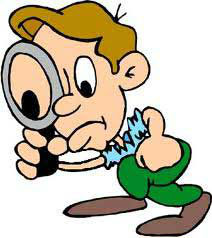
Economy in U.S. Grew More Than Forecast in Second Quarter

The U.S. economy expanded at a faster pace in the second quarter as a smaller trade deficit and gains in inventories overshadowed the effects of federal budget cutbacks.
Gross domestic product rose at a 2.5 percent annualized rate, up from an initial estimate of 1.7 percent, Commerce Department figures showed today in Washington. The median forecast of 79 economists surveyed by Bloomberg projected a 2.2 percent gain.
The improvement is consistent with projections that the U.S. is weathering the fallout of government budget cuts and higher taxes and is poised to pick up once those restraints fade. Gains in employment and home prices that are shoring up confidence signal households will sustain spending, the biggest part of the economy.
“The economy is doing fine,” said Brian Jones , a senior U.S. economist at Societe Generale in New York , who projected a 2.5 percent gain in GDP. “It is going to weather the sequestration. Growth will accelerate in the second half.”
Other reports today showed the number of Americans filing applications for unemployment benefits dropped last week, while consumer confidence fell to the lowest level in more than four months as Americans’ views on the economy, finances and spending soured.
Jobless Claims
Jobless claims in the week ended Aug. 24 declined 6,000 to 331,000 from 337,000 the week before, according to figures from the Labor Department. The decrease was in line with the median forecast of 50 economists surveyed by Bloomberg that called for a drop to 332,000.
The Bloomberg Consumer Comfort Index declined to minus 31.7 for the period ended Aug. 25 from minus 28.8 a week earlier. The gauge has dropped 8.2 points in the three weeks since reaching a more than five-year high.
Stocks advanced after the reports, and Treasuries declined. The Standard & Poor’s 500 Index climbed 0.2 percent to 1,638.45 at 10:03 a.m. in New York. The yield on the 10-year Treasury note rose two basis points, or 0.02 percentage point, to 2.79 percent.
Estimates for GDP, the value of all goods and services produced, ranged from gains of 0.3 percent to a 2.5 percent, based on forecasts from economists surveyed by Bloomberg.
Gaining Momentum
Today’s revision paints a clearer picture of an economy gaining momentum after a drought, Superstorm Sandy and the battle over the impending fiscal cliff stalled growth in the last three months of 2012. The second quarter’s growth rate followed gains of 0.1 percent in the fourth quarter and 1.1 percent in the first three months of this year.
Consumer spending climbed 1.8 percent, the same as previously reported, propelled by gains in durable goods such as automobiles and appliances. That followed a 2.3 percent increase from January through March. Purchases added 1.2 percentage points to growth.
Consumers’ purchasing power improved, with disposable income adjusted for inflation rising at a 3.2 percent annualized rate from April through June after a 7.9 percent decrease in the first quarter. The saving rate in that period increased to 4.5 percent from 4.1 percent.
Today’s report also included revisions to first-quarter personal income. Wages and salaries fell by $46.2 billion, revised up by $10.7 billion from the previously reported $56.9 billion drop. They climbed by $55 billion in the second quarter.
Growing Profits
Today’s report also offered a first look at corporate profits. Before-tax earnings rose at a 3.9 percent rate, the biggest gain since the fourth quarter of 2011, after falling at a 1.3 percent pace in the prior period. They climbed 5 percent from the same time last year.
Gross domestic income, which reflects all the money earned by consumers, businesses and government agencies climbed at a 2.5 percent annualized rate in the second quarter, matching the gain in GDP.
The trade deficit in the second quarter was smaller than previously estimated, reflecting the biggest gain in exports in more than two years. The gap was little changed from the first quarter, eliminating the 0.8 percentage-point drag previously estimated.
On the business side, corporate spending grew at a 9.9 percent annualized rate, exceeding the 9 percent gain previously reported. This reflected a $62.6 billion gain in stockpiles that was larger than first estimated. Smaller gains in outlays for equipment and intellectual property were offset by bigger increases in commercial construction.
Budget Cuts
Government spending fell at a 0.9 percent annualized rate, compared with a prior estimate of a 0.4 percent decline, as state and local outlays dropped.
Among other details, residential construction increased at a 12.9 percent annualized rate.
The rebound has spilled over into spending on remodeling. Atlanta-based Home Depot Inc., the largest U.S. home-improvement retailer, and Lowe’s Cos. (LOW) , in Mooresville, North Carolina , each reported second-quarter profit that topped analysts’ estimates and raised their annual forecast.
Today’s report also showed price pressures remained contained. A measure of inflation, which is tied to consumer spending and strips out food and energy costs, rose at a 0.8 percent annualized pace. It was the weakest performance since the fourth quarter of 2010.
Fiscal Tightening
The lingering effect of fiscal tightening is expected to wane this quarter and the next. The payroll tax had reverted to its 2010 rate of 6.2 percent in January after holding at 4.2 percent for two years, resulting in lower take-home pay. About $85 billion in automatic across-the-board federal spending cuts, known as sequestration, started taking effect in March.
Consumers continue to spend on big-ticket items. Car and light truck sales are on track for the best year since 2007 , figures from Ward’s Automotive Group show. Combined purchases of new and existing homes are the highest since 2009, according to Bloomberg data.
Federal Reserve officials were “broadly comfortable” with Chairman Ben S. Bernanke ’s plan to start reducing bond buying later this year if the economy improves, minutes of their July meeting showed.
Economic growth is projected at a 2.5 percent annualized pace in the second half of the year, according to the median forecast in a Bloomberg survey of economists this month.
There are also signs of improvement in overseas markets such as China , which is stabilizing after a two-quarter slowdown. The world’s second-biggest economy reported that industrial-profit growth rebounded in July, and also posted higher-than-forecast industrial production in July, a rebound in trade, and a stronger reading for a manufacturing index.
To contact the reporter on this story: Shobhana Chandra in Washington at schandra1@bloomberg.net
To contact the editor responsible for this story: Christopher Wellisz in Washington at cwellisz@bloomberg.net
NASDAQ DIP and RIP
Here is the best word that describes what i do here.
Intuitive;
means having the ability to understand or know something without any direct evidence or reasoning process.
I was born with it, I'm truly blessed!
Alway's searching for winners'



